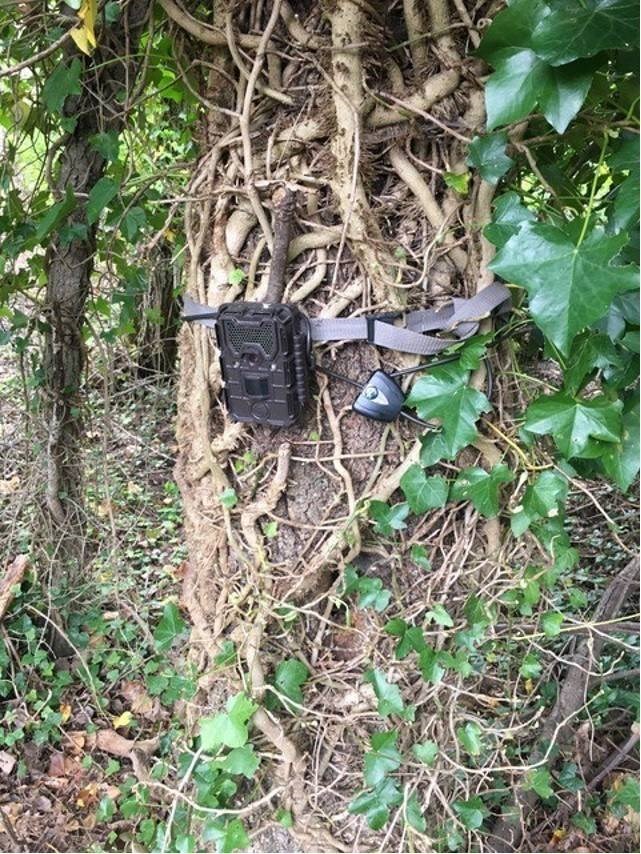Somebody is swiping wildlife cameras from Oak Bay.
For real. Since early December, a thief has stolen 13 of the 39 tree-mounted cameras being used in a deer-management experiment in which the municipality’s does are given birth-control shots.
This is, obviously, bad news for the Urban Wildlife Stewardship Society and its project, which it believes will give North American communities an alternative to deer culls. The group needs the data from the cameras to show that it’s possible to control Bambi with something other than a death sentence.
The question then is: Why would a thief go to all this trouble for no apparent purpose?
It’s not as though the $250 Bushnell cameras, some of which are engraved with the letters UWSS, are particularly valuable — not relative to the effort expended in stealing them, anyway. Nor are they good for much other than tracking wildlife, says Oak Bay’s deputy police chief, Mark Fisher. Yet someone has been going from place to place over an extended period to target them.
It makes Fisher wonder if the thief is someone who has a beef with the deer-control program and wants it to fail. “That’s about the only motive I can see.”
The project uses immunocontraception to reduce the number of fawns born each year. The idea, says UWSS president Kristy Kilpatrick, is to reduce deer numbers “in a way that does not open up territory for new deer to move in and replace them the way population culls do.” Preliminary results, following vaccines given to 60 does in 2019, show it’s working.
Kilpatrick is baffled by the thefts. People who hate deer should like the project because it cuts their numbers. People who love them should like it because it does so humanely. Yet over the past couple of months, someone has been seeking out the relatively well-hidden cameras.
Police do deal with plenty of head-scratching thefts for which there is no obvious reason. The Times Colonist archives are full of stories of Vancouver Island thieves making off with all manner of oddities: sex toys, cremation urns, the light bar from a cop car and, during the 2016 renovation of the Empress Hotel, the tiger skin that glared down from the fireplace of the Bengal Lounge.
There’s also the baffling case of the two eight-foot totem poles that in 2014 were lifted, four weeks apart, from the site of the old Malahat Mountain Inn, where they had stood since the first half of the 20th century.
Sometimes the motive can be found in the bottom of a bottle, as was the case with the 2000 burglary of a Russian submarine that was then moored as an Inner Harbour tourist attraction. VicPD solved that crime when three 5 a.m. drunks were discovered wobbling down Government Street in big fur hats.
Some thefts are simply ill-thought-out crimes of opportunity, such as the time in 2014 when a notoriously light-fingered couple lifted eight timepieces — including a gold pocket watch that train robber Bill Miner left behind when he broke out of the B.C. Pen — from the Old Town exhibit in the Royal B.C. Museum. Police recovered the goods.
Then there are those thefts that, while bizarre, were obviously carried out with planning and purpose. In 2007, metal thieves posing as Ucluelet municipal workers dismantled two brand-new sets of ballfield bleachers. In 2009, someone stole 42,000 baby geoduck clams from a supposedly secret growing site off Campbell River, where they had been tethered in trays six metres below the surface.
That same year, someone robbed a Cowichan Valley farm of a container holding $25,000 worth of bull semen and cattle embryos. You would think the market for the latter would be limited.
Victoria’s most infamous targeted theft came in 1995, when a man went into the provincial archives, signed out nine books — including a 1601 edition of Theatrum Orbis Terrarum, the first known collection of world maps — and surreptitiously sliced out 20 maps, including one of the earliest ones of the Pacific Rim and another pointing to a possible location of the Northwest Passage.
It was part of a spree in which Gilbert Bland, a Florida antique-map store owner, removed $700,000 worth of plates from rare books in a score of institutional libraries around North America.
The maddening thing with any theft is the outsized impact on the victim. That’s true whether it’s a matter of somebody smashing your $300 car window to get at $4 in loose change, or of someone undercutting a humane deer-control program by swiping its cameras.
jknox@timescolonist.com



